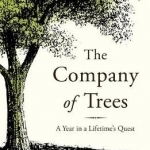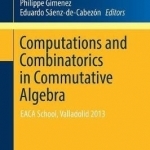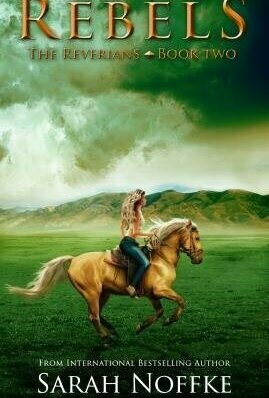Merissa (13585 KP) rated Rebels (The Reverians #2) in Books
Jun 7, 2023
WOW! This book is jam-packed full of emotion, so consider yourself warned already. We find out more about Vider's plans and just how atrocious that man is. If you're looking for a 'big bad' with redeeming qualities, you've got the wrong series. This man is evil, through and through. We also get a glimpse of how it began when Rogue's mom plays an important role in bringing things to a head.
The emotional pain keeps on coming for Em, with hits coming from every direction, including her father and sister. It might be wrong, but I was smiling at a certain part involving them, even knowing that Em would be guilt-ridden because of it!
This is so incredibly well-written, from the first word to the last. *Fair warning* - I said it was emotional, the ending tore out my heart, ripped it into tiny pieces and then stomped all over it! In other words, you 'might' need to have a Kleenex handy!!!
Absolutely and definitely recommended. I definitely need the third book in this series, Warriors. I'm simply not prepared for my Reverian adventure to end.
* I received this book from the author in return for a fair and honest review. *
Merissa
Archaeolibrarian - I Dig Good Books!
Apr 24, 2016

Top railway journeys of the world
Book
This beautifully illustrated and fully updated book features 26 of the world's greatest railway...
A World Without Mind
Book
Over the past few decades there has been a revolution in terms of who controls knowledge and...
Charlie Cobra Reviews (1840 KP) rated Scary Stories to Tell in the Dark (2019) in Movies
Jul 7, 2020
Three teenagers in the small town of Mill Valley, Pennsylvania, Stella (Zoe Colletti), Auggie (Gabriel Rush) and Chuck (Austin Zajur) incur the wrath of school bully Tommy Millner after playing a prank. They are chased by him and saved by a drifter named Ramon (Michael Garza) who let's them into his car. The group including Ramon explore a haunted house belonging to the Bellows, founders of the town, Inside of a secret room belonging to the Bellows' daughter Sarah, they find a book of scary stories written by her. After taking the book with them, they start to believe that there is more to the rumors about the house being haunted when stories in the book appear to happen in real life.
This movie was actually pretty good. I thought it could have been scarier but I think it was done well for being rated PG-13. Of course, I'm old enough to remember the books and they were really creepy, especially the illustrations. The movie was good at building suspense, and being creepy. I really liked the characters and felt that they were likeable and had a little something for everyone in how they were relatable. The character development could have been better for sure but the creature effects were spot on. The Monsters were definitely awesome and I like the way the made it an anthology movie without it actually being an anthology. It was pretty unique in that way and I can see how a sequel could work if it's financially successful enough to warrant one. I give this movie a 7/10.

Planica Ski Flying
Games
App
********************************************************** WELCOME ski jumping & flying fans to...

The Company of Trees: A Year in a Lifetime's Quest
Book
'Thomas Pakenham could convert a property developer into a tree-hugger ...The book's photographs are...
Merissa (13585 KP) rated Forever Wilde in Aster Valley (Forever Wilde #9) in Books
Nov 19, 2021 (Updated Jul 10, 2023)
Now, let me say one thing first - I wanted more of Darius and Miller. They seemed to get lost at times amongst all of the others. Saying that!!! Lucy Lennox has managed to perfectly convey all of the differing personalities that come with these two clans.
What I did get of Miller and Darius was superb. I related so much with Miller in so many ways. Maybe that's why I want more, nothing to do with the story itself, just him as a character. Either way, this book gave me laughs and tears, warm fuzzy feelings, and cold hard ones.
Will this put me in the minority if I say I was cheering when Miller let rip with Tilly? Maybe, maybe not. I love her character, but he had valid points, and it made her seem more life-life and not so infallible.
I was convinced this would be a 4-star read even as I got toward the end, but honestly? I can't. Yes, I wanted more, but isn't that a sign of a good book? This is one I read in one sitting, that I thoroughly enjoyed and have no hesitation in recommending. If for no other reason than that, this is a 5-star book for me. I just hope to see Miller and Darius in the future!
** same worded review will appear elsewhere **
* A copy of this book was provided to me with no requirements for a review. I voluntarily read this book, and the comments here are my honest opinion. *
Merissa
Archaeolibrarian - I Dig Good Books!
Nov 19, 2021

Computations and Combinatorics in Commutative Algebra: EACA School, Valladolid 2013: 2017
Anna M. Bigatti, Philippe Gimenez and Eduardo Saenz-De-Cabezon
Book
Featuring up-to-date coverage of three topics lying at the intersection of combinatorics and...



